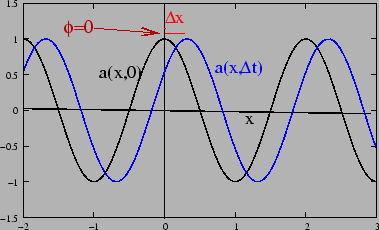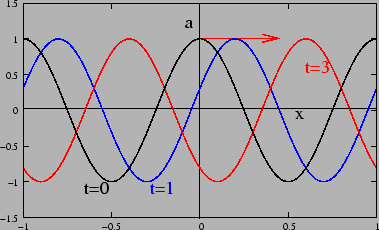



Next: Waves in three dimensions.
Up: Sinusoidal Waves.
Previous: Angular frequency and wave
Contents
We now consider the evolution of the wave in both position and time
together. We consider the wave
 |
(6.9) |
which has phase
 . Let us follow the motion of the
position where the phase has value
. Let us follow the motion of the
position where the phase has value  as time increases. We
see that initially
as time increases. We
see that initially  at
at  and after a time
and after a time  this moves to a position
this moves to a position
 |
(6.10) |
shown in Figure 6.3.
Figure 6.3:
 |
The point with phase  moves at
speed
moves at
speed
 |
(6.11) |
It is not difficult to convince oneself that this is true for any
constant value of the phase, and the whole sinusoidal pattern
propagates along the  direction (Figure 6.4) at the
speed
direction (Figure 6.4) at the
speed  which is called the phase velocity of the wave.
which is called the phase velocity of the wave.
Figure 6.4:
 |




Next: Waves in three dimensions.
Up: Sinusoidal Waves.
Previous: Angular frequency and wave
Contents
Physics 1st Year
2009-01-06